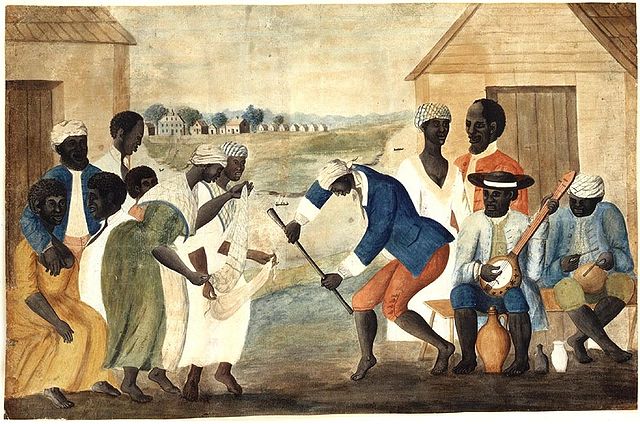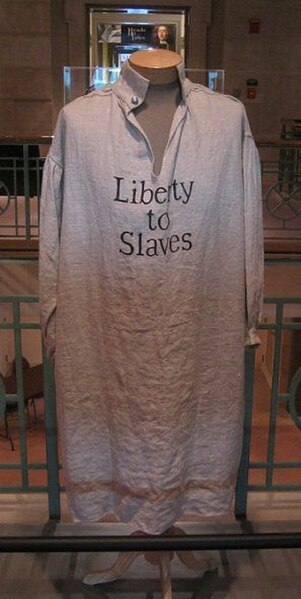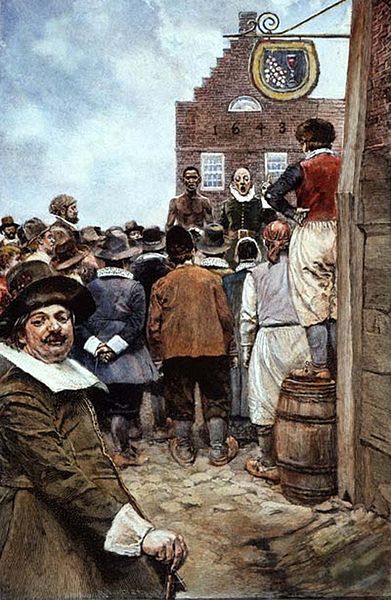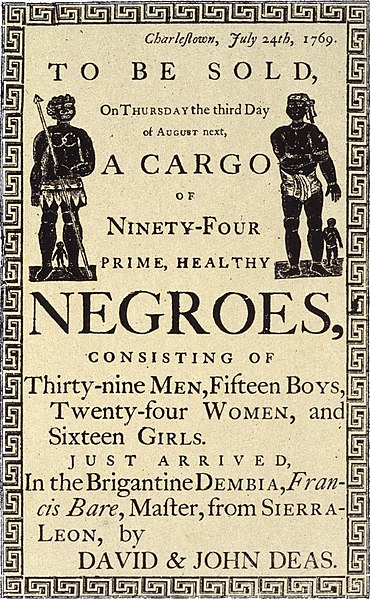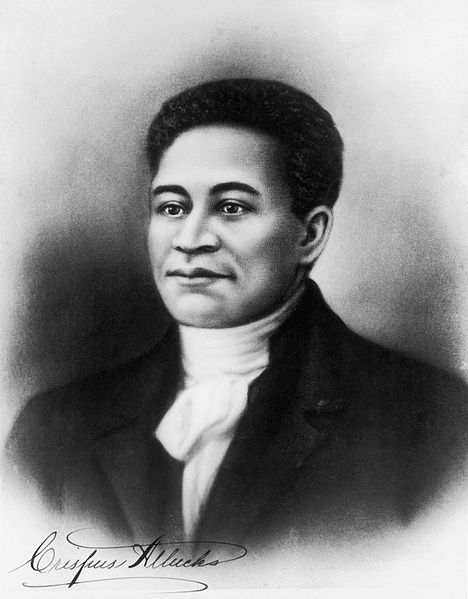Slavery in the United States
The legal institution of human chattel slavery, comprising the enslavement primarily of Africans and African Americans, was prevalent in the United States of America from its founding in 1776 until 1865, predominantly in the South. Slavery was established throughout European colonization in the Americas. From 1526, during the early colonial period, it was practiced in what became Britain's colonies, including the Thirteen Colonies that formed the United States. Under the law, an enslaved person was treated as property that could be bought, sold, or given away. Slavery lasted in about half of U.S. states until abolition in 1865, and issues concerning slavery seeped into every aspect of national politics, economics, and social custom. In the decades after the end of Reconstruction in 1877, many of slavery's economic and social functions were continued through segregation, sharecropping, and convict leasing.

Image marketing 18th-century tobacco produced by enslaved laborers in the Colony of Virginia (Colonial Williamsburg Foundation)
The Old Plantation, watercolor attributed to John Rose, possibly painted 1785–1795 in the Beaufort District of South Carolina (Abby Aldrich Rockefeller Folk Art Museum)
This postage stamp, which was created at the time of the Bicentennial, honors Salem Poor, who was an enslaved African-American man who purchased his freedom, became a soldier, and rose to fame as a war hero during the Battle of Bunker Hill.
A smock similar to those worn by Black Loyalists in the Ethiopian Regiment.
African Americans, also known as Black Americans or Afro-Americans, are an ethnic group consisting of Americans with partial or total ancestry from any of the Black racial groups of Africa. African Americans constitute the third largest racial or ethnic group in the U.S. after White Americans and Hispanic and Latino Americans. The term "African American" generally denotes descendants of Africans enslaved in the United States.
Slaves processing tobacco in 17th-century Virginia, illustration from 1670
The first slave auction at New Amsterdam in 1655; illustration from 1895 by Howard Pyle
Reproduction of a handbill advertising a slave auction in Charleston, South Carolina, in 1769
Crispus Attucks, the first "martyr" of the American Revolution. He was of Native American and African American descent.


